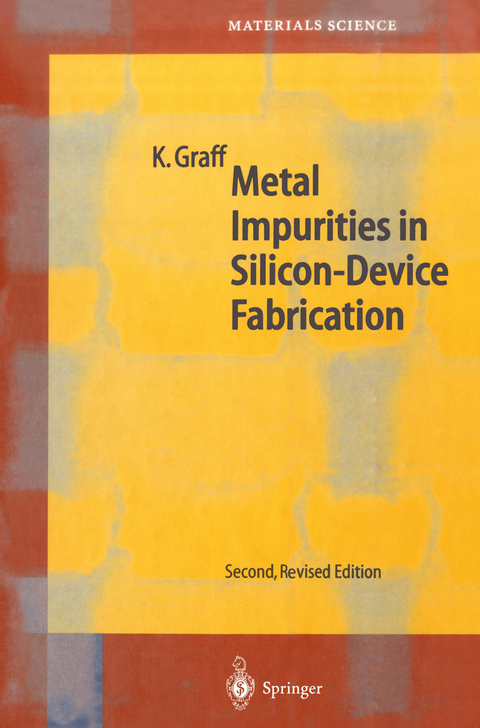
Metal Impurities in Silicon-Device Fabrication
Springer Berlin (Verlag)
978-3-540-64213-8 (ISBN)
1. Introduction.- 2. Common Properties of Transition Metals.- 2.1 General Behavior.- 2.2 Contamination of Silicon Wafers.- 2.3 Impact on Device Performance.- 3. Properties of Transition Metals in Silicon.- 3.1 Solubilities.- 3.2 Diffusivities.- 3.3 Dissolved Impurities.- 3.4 Precipitated Metals.- 4. Properties of the Main Impurities.- 4.1 Iron.- 4.2 Nickel.- 4.3 Copper.- 4.4 Molybdenum.- 4.5 Palladium.- 4.6 Platinum.- 4.7 Gold.- 5. Properties of Rare Impurities.- 5.1 Scandium.- 5.2 Titanium.- 5.3 Vanadium.- 5.4 Chromium.- 5.5 Manganese.- 5.6 Cobalt.- 5.7 Zinc.- 5.8 Zircon.- 5.9 Niobium.- 5.10 Ruthenium.- 5.11 Rhodium.- 5.12 Silver.- 5.13 Cadmium.- 5.14 Hafnium.- 5.15 Tantalum.- 5.16 Tungsten.- 5.17 Rhenium.- 5.18 Osmium.- 5.19 Iridium.- 5.20 Mercury.- 6. Detection Methods.- 6.1 Detection of Total Impurity Content.- 6.2 Detection of Dissolved Impurities.- 6.3 Detection of Precipitates.- 7. Requirements of Modern Technology.- 7.1 Reduction of Contamination.- 8. Gettering of Impurities.- 8.1 Gettering Mechanisms.- 8.2 Control of Gettering Efficiency.- 9. Conclusion and Future Trends.- References.
| Erscheint lt. Verlag | 18.2.2000 |
|---|---|
| Reihe/Serie | Springer Series in Materials Science |
| Zusatzinfo | XV, 270 p. |
| Verlagsort | Berlin |
| Sprache | englisch |
| Maße | 155 x 235 mm |
| Gewicht | 526 g |
| Themenwelt | Technik ► Elektrotechnik / Energietechnik |
| Technik ► Maschinenbau | |
| Schlagworte | deep level transient spectroscopy • defects • device fabrication • gettering • HC/Technik/Chemische Technik • HC/Technik/Elektronik, Elektrotechnik, Nachrichtentechnik • iron • metals • Silicon • Silicon Device Fabrication • Silicone • Silicone / Silikone • spectroscopy • Tables • transition metal defects • X-Ray |
| ISBN-10 | 3-540-64213-7 / 3540642137 |
| ISBN-13 | 978-3-540-64213-8 / 9783540642138 |
| Zustand | Neuware |
| Haben Sie eine Frage zum Produkt? |
aus dem Bereich


